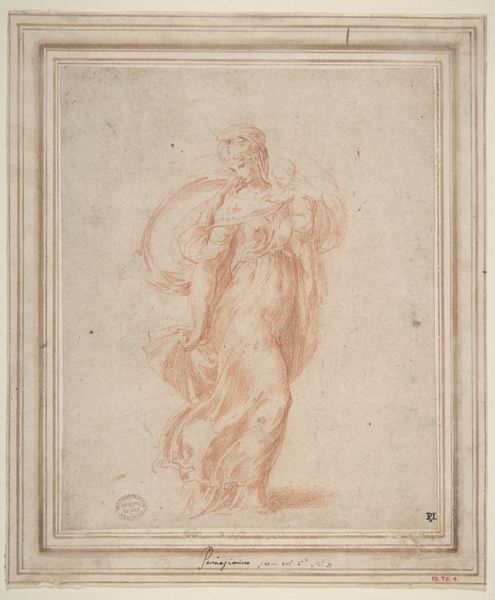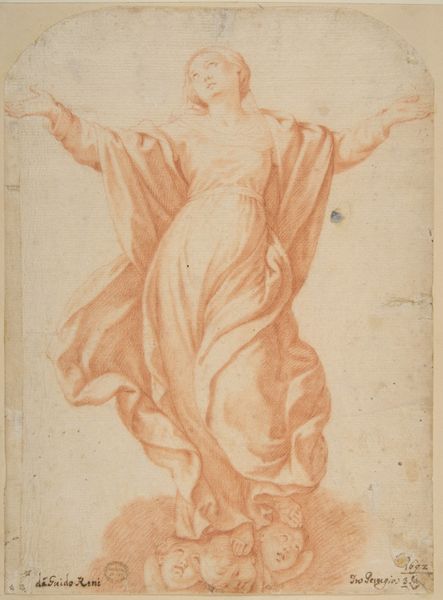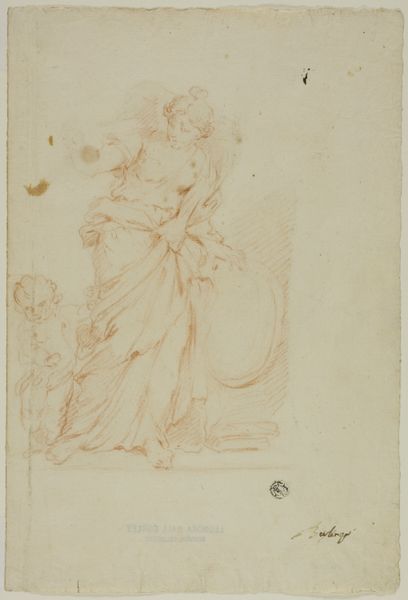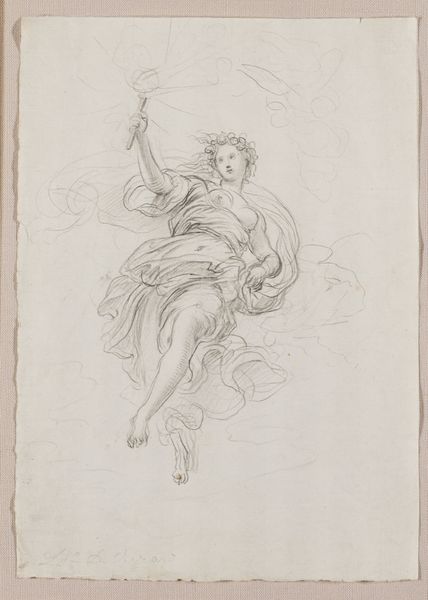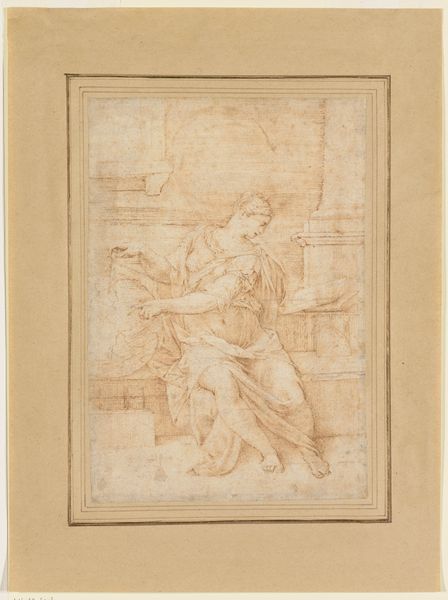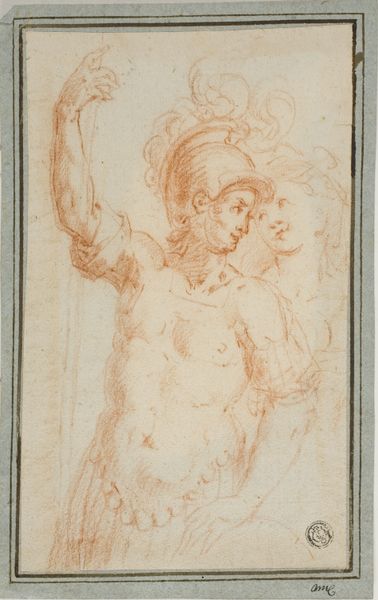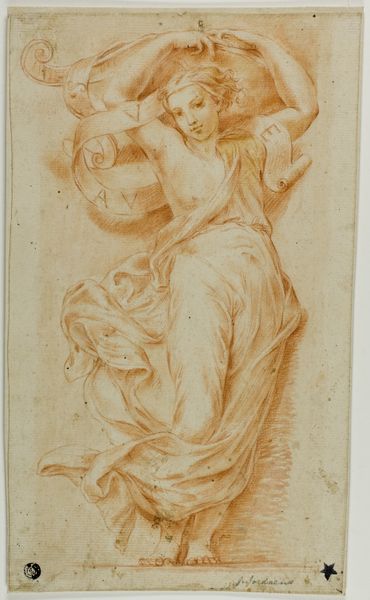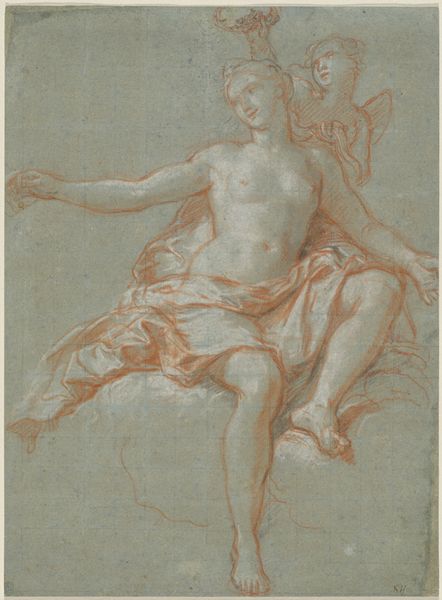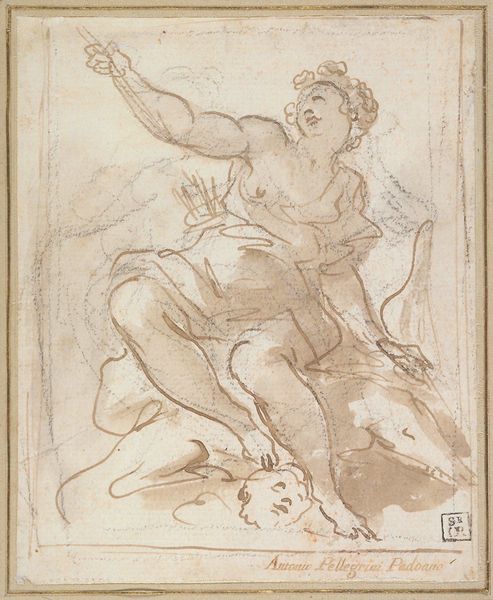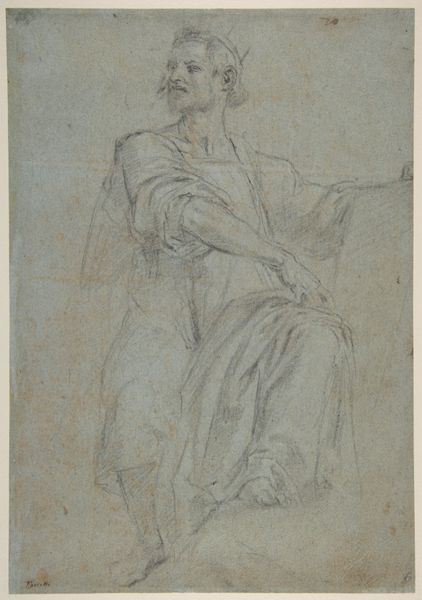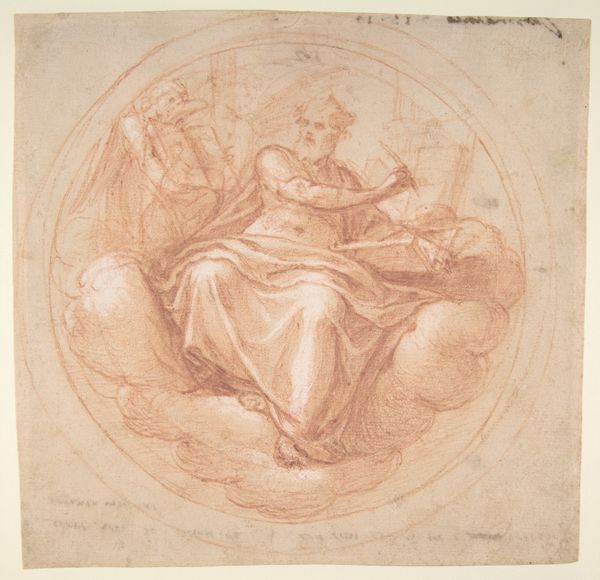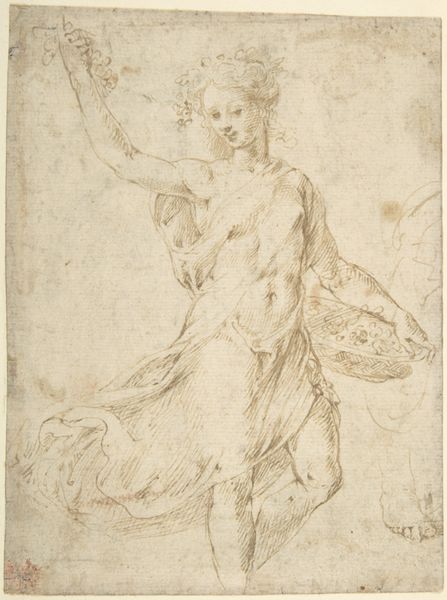
drawing
#
drawing
#
allegory
#
baroque
#
history-painting
#
academic-art
#
nude
Dimensions: sheet: 22 7/16 x 18 1/4 in. (57 x 46.4 cm)
Copyright: Public Domain
Editor: Augustin Terwesten's "Study for an Allegory," made sometime between 1669 and 1711. It’s a beautiful drawing. The red chalk is so vibrant, giving the figure this powerful presence, seated upon a globe, and offering what looks like grapes. What statements might this artwork be making, considering the political circumstances during this time? Curator: A fantastic observation! The “Study for an Allegory”, indeed. The public role of art during the Baroque era was to inspire, persuade, and legitimize power. This drawing likely represents an idea, a virtue, or even a political entity through symbolic imagery. It speaks of its era in both what it chooses to represent, but equally how those ideas were constructed in service of power. The academic style here points to its social function - it’s very controlled, very staged, reflecting the ideals propagated through institutions like academies of art. Have you thought about what that pose might communicate, given the sociopolitical norms of the time? Editor: Well, she’s semi-nude and seated above the world, pointing her arm upward which may suggest she is in control, or being celebrated. Perhaps her nudity would reference an idealised classic figure from previous generations? Are the grapes she carries a symbol too? Curator: Exactly! The partially nude figure is invoking the authority of classical antiquity, very common in baroque allegories, but it also plays with the male gaze as constructed via classical forms. And the grapes might be Bacchus, suggesting an association with festivity, prosperity, or perhaps a more dangerous hedonism depending on the context in which this would have appeared.. Who might have commissioned such a drawing? Think of the political landscape and the patrons who supported this artistic production. Editor: Knowing this would have most likely been a preparatory study for a more detailed allegory it perhaps catered to wealthy landowners who would commission large baroque paintings within their property to assert their status as a celebration of their achievements, or to reflect cultural identity. Curator: Precisely! And that brings us back to the social function of art. The work not only reflects but actively participates in creating systems of meaning and reinforcing societal structures of power. It would be a conversation starter in the public arena. Editor: This artwork reveals how even preparatory sketches for allegorical paintings actively reflect and mold socio-political ideals of their time. Fascinating. Thank you for clarifying that for me.
Comments
No comments
Be the first to comment and join the conversation on the ultimate creative platform.
